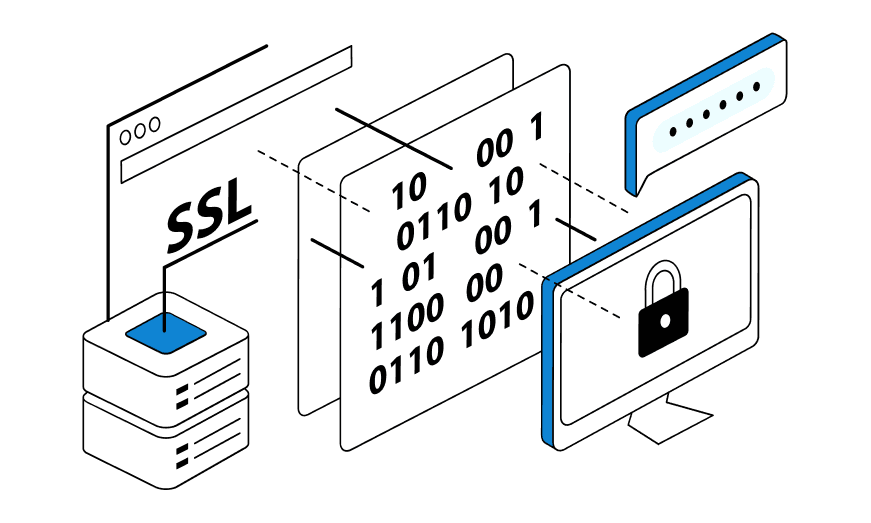
Ad automation is not just a trend, but an urgent necessity for those who work with a large number of campaigns, platforms and accounts. Automated management systems can save time, scale traffic, and respond quickly to changes. However, as automation increases, so do the risks – especially if you run ads without proper protection.
Platforms like Google Ads, Facebook Ads, TikTok Ads and others are actively fighting against multi-accounting, geo-restriction circumvention and “non-standard” user behavior. In such conditions, the integration of proxies into advertising systems becomes a key tool not only for survival, but also for stable earnings on the Internet.
In this article we will discuss why proxies for making money online are no longer an option but a necessity, how not to get banned in advertising systems, and why mobile proxies for arbitrage are the best choice for those who work with traffic professionally.
Why proxy advertising has become a necessity
Every major advertising system uses advanced tracking algorithms. They record not only IP addresses, but also browser behavior, device, time of activity, country of connection and even interaction with the advertising cabinet. One and the same IP or suspicious behavior and you risk losing your account, budget, and sometimes the entire linked domain environment.
Proxies allow you to:
- mask IP and geolocation;
- work with several accounts simultaneously;
- launch campaigns from different regions;
- test creatives without overlapping;
- do not get banned in advertising systems, even with large-scale launches.
Mobile proxies are especially effective for arbitrage – they use IP addresses of real mobile operators, which makes you a “normal” user in the eyes of the advertising system. This reduces the risk of blocking to almost zero and allows you to safely run ads even from a new account.
Types of proxies and their peculiarities for advertising purposes
Not all proxies are equally suitable for advertising purposes. Depending on the platform, tasks and level of automation, it is worth choosing a specific type – so that advertising through proxies works effectively and does not face blocking.
Mobile proxies for advertising
Mobile proxies are the gold standard for arbitrageurs. They use IP addresses of real mobile operators, making them look like regular user traffic. This minimizes the risk of blocking and makes such proxies ideal for large-scale runs.
Advantages:
- High anonymity and trust from advertising systems.
- Automatic IP rotation.
- Great for multi-accounting.
- Best solution for Facebook Ads, TikTok, Google Ads.
If you want to avoid getting banned in advertising systems and launch campaigns consistently, choose mobile proxies.
Resident IPs for advertising management
Resident proxies work through users’ real IP addresses (home or office). They are ideal for manual, customizing creatives and geotargeted ads.
Uses:
For A/B testing.
For manually launching campaigns.
In region-specific marketing.
In eCommerce and audience segmentation tasks.
This is the optimal proxy for marketing if you need stability and “white” traffic.
Rotary and data center proxies for advertising campaigns
Data center proxies are fast and cheap proxies without geo-linking. But they are more likely to get banned, especially if they are used without anti-detection tools. It is better to use them for:
- parsing;
- analyzing competitors’ ads;
- monitoring the output.
Rotational proxies automatically change IP addresses at a specified interval. This is suitable for multithreaded tasks and automated scripts, but complicates authorization in advertising offices.
Automation of advertising campaigns with proxies
Modern marketing is impossible to imagine without automation. Large-scale campaigns, dozens of accounts, testing creatives and segmented offers – all this requires stable work via proxies.
Automating ad campaigns with proxies allows you to:
- painlessly scale traffic;
- avoid repeated bans;
- run ads in multiple regions simultaneously;
- manage ads through scripts and CRM.
Knowing how to use proxies in advertising, you can not only save accounts, but also bring any advertising funnel to a plus. The key is to choose the right tools.
Proxy integration is especially effective in:
- autoplay campaigns via trackers;
- multi-account funnels;
- working with Facebook, Google, TikTok Ads;
- dynamic retargeting and segmentation.
For stable proxy advertising, mobile and resident solutions are ideal – especially from trusted providers. This is not only protection, but also an important asset for a professional traffic manager.

How not to get banned in advertising systems
Advertising platforms are increasingly using anti-fraud mechanisms. Any suspicious action – change of geolocation, repeated behavior or duplication of accounts – may result in blocking. To avoid getting banned in advertising systems, it is important to follow a few basic rules:
- Do not use the same IPs for different accounts without an anti-detection browser.
- Be sure to use IP rotation when scaling traffic.
- Separate personal and work activity: different proxies for different projects.
- Do not connect one proxy to all accounts in a row.
- Use the best proxies for advertising systems that have been tested for compatibility with a particular platform.
For example, proxies from LTESocks provide a high level of trust on the part of systems, thanks to mobile IPs and built-in system of address change without breaking the connection.
Scaling advertising through proxies: tips from experts
Proxies are not just a way to bypass blocking, but a scaling tool. Here’s what traffic experts advise:
Use mobile proxies or resident IPs for primary accounts.
Apply rotating proxies when testing creatives in bulk.
Always run ads through an anti-detection environment.
Differentiate ad networks (Google, TikTok, Facebook) across different IPs and devices.
Store proxies and account data in a manager with two-factor protection.
Scaling advertising through proxies requires a systematic approach, but with proper configuration you will get stable results without losing accounts. This approach is especially effective for eCommerce, where you need to launch dozens of campaigns for the same products, but under different geos and landings.
Conclusion: is it worth using proxies in ad automation?
Yes, you should. And not just worth it – proxies have already become a mandatory component in arbitrage, contextual advertising and retargeting strategies. They are your shield against bans and the basis for sustainable scaling. Proxies for eCommerce, proxies for marketing, proxies from LTESocks – choose those solutions that suit your business objectives. Don’t skimp on the tools that determine the stability of your income.
FAQ
1. What are the best proxies to choose to run ads without risks?
- Mobile and resident – they provide a high level of trust. Proxies from LTESocks have proven themselves especially well.
2. Is it possible to connect one proxy to several advertising accounts?
- No. Even if the accounts are different, the IP will be the same, which can lead to mass blocking.
3. How are mobile proxies better than regular proxies for traffic arbitrage?
- They look like real user traffic, pass moderation more easily and are less likely to be banned.
4. How difficult is it to automate advertising with proxies without a programmer?
- There are ready-made solutions: antidetect browsers, proxy managers, trackers. You can handle them without technical education.
5. Do proxies work for verifying creatives and bypassing moderation?
- Yes. Especially if you need to test the same creative in different regions or from different devices.
6. What is the IP lifetime of rotational proxies?
- From 5 to 30 minutes depending on the provider. With LTESocks, rotation can be configured manually or via API.









